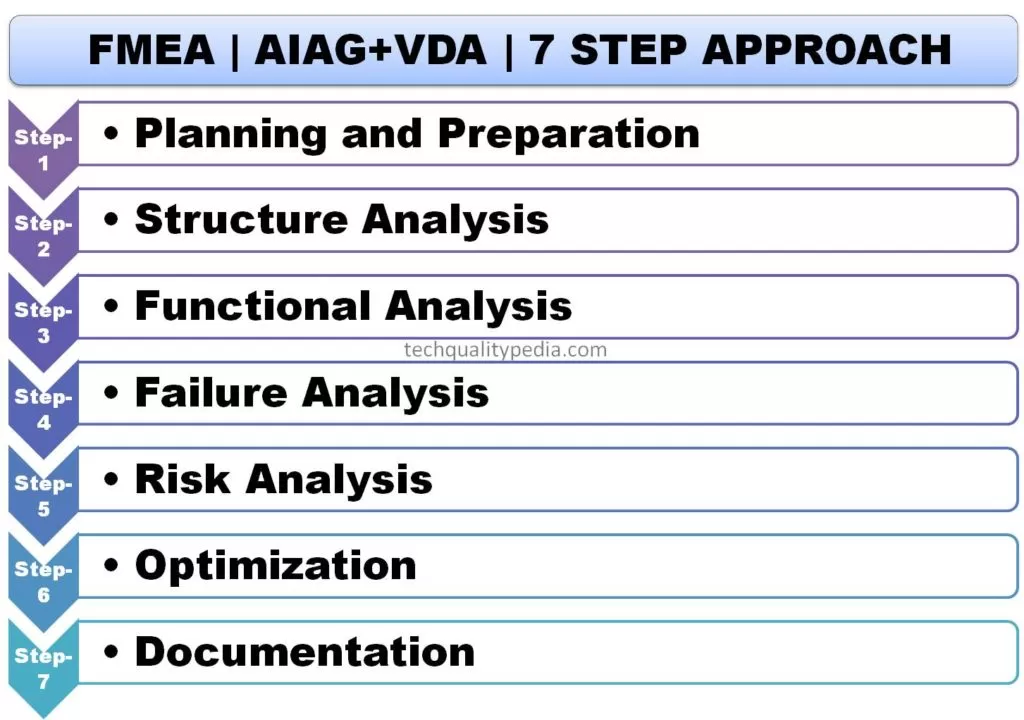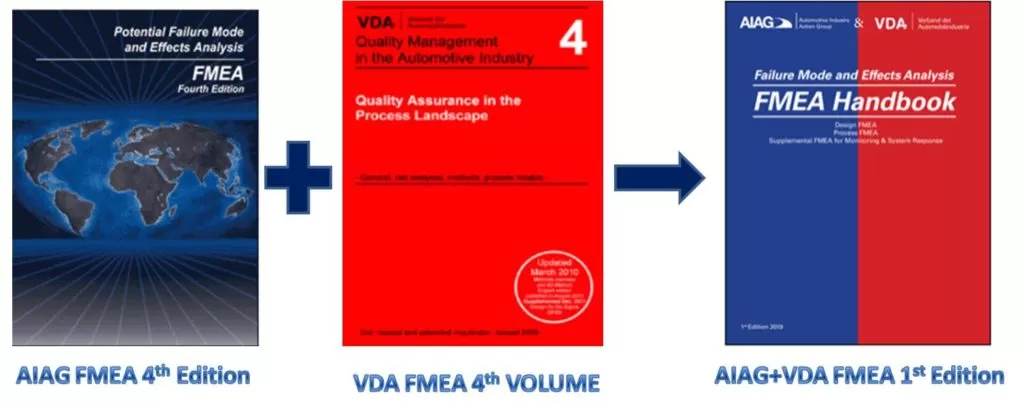A Failure mode and Effect Analysis (FMEA) is a systemized set of activities that are designed to:
- Recognize and assess a product’s or process’s possible failure and its consequences.
- Determine what activities could be taken to minimize or eliminate the risk of a potential failure.
In simple words, it is a structured way to identify and address potential failures or problems and their effects on the process or the system before an adverse event occurs.
Failure mode effect analysis is one of the important tools among the following five core tools ofIATF 16949:2016Standard.
- Advanced Product Quality Planning
- Production Part Approval Process-PPAP
- Measurement System Analysis-MSA
- Statistical Process Control-SPC
Table of Contents
TYPES OF FMEA
There are two major types of FMEA:
- Design FMEA(DFMEA)
- Process FMEA (PFMEA)
Design FMEA (DFMEA)
Increases the likelihood that failure modes and effects have been taken into account during the design phase.
- Aids in design test and development programs.
- Failure assessed from the customer’s point of view.
- Allows tracking and documenting risk-reducing actions.
- Future analysis and designs.
Process FMEA (PFMEA)
Increases the likelihood that failure modes and effects have been taken into account during the process phase.
- Identifies potential manufacturing or assembly process causes failure.
- Identifies actions to reduce or eliminate the chance of failure occurrence.
Identifies process variables that, if controlled, can reduce the occurrence or improve the detection of failure conditions. - Helps prioritize corrective actions
When to Start FMEA?
- Design FMEA should be initiated before design concept finalization
- A process FMEA should be started before or at the feasibility stage, before tooling for production.
- FMEAs are “live” documents and should be continually updated as changes occur and new information is obtained.
- FMEA should be performed before failure modes are unknowingly designed.
- Properly applied FMEA is an interactive and never-ending process.
AIAG VDA FMEA | FMEA Process | 7-Step Approach
The new FMEA process is based on the 7-step approach which is listed below:

- Step 1: Planning and Preparation
- Step 2: Structure Analysis
- Process Item
- Process Step
- Process Work Element
- Step 3: Functional Analysis
- Function of the Process Item
- Function of the Process Step and Product Characteristics
- Function of the Process Work Element and Process Characteristics
- Step 4: Failure Analysis
- Step 5: Risk Analysis
- Step 6: Optimization
- Step 7: Documentation
AIAG & VDA FMEA | 1st edition 2019

- The AIAG & VDA FMEA manual is developed by the collaborative effort of AIAG (Automotive Industry Group) and VDA (Verband der Automobilindustrie) which is the German association for automotive manufacturers.
- The first edition 2019 AIAG & VDA FMEA manual is a replacement for both the AIAG FMEA manual-4th edition and the VDA FMEA manual volume 4.
- The new FMEA process manual is transformed into a seven-step system for more prevention control.
- In the new FMEA, the RPN concept has been eliminated and is replaced by the ” Action Priority” system to prioritize the recommended actions. Earlier actions were based on the high RPN number but now the “Action priority” process uses a set of tables in order to decide the priority of action.
- The inclusion of a supplemental FMEA approach for Monitoring and System Response(FMEA-MSR) in the AIAG & VDA FMEA manual has opened up a whole new field of risk analysis.
- The improved action prioritization process will enable the organizations to identify and focus on the actions that will have the greatest positive impact on product designs and manufacturing processes.
Why FMEA Alignment AIAG & VDA
There was the following reason for FMEA alignment AIAG and VDA :
- Automotive suppliers to both North America and German OEMS were required to assess their failure modes and effects differently.
- Differences between the AIAG and VDA manuals’ severity, Occurrence, and Detection rating tables.
- Created more confusion and added complexity to product design/development and process improvement activities.
- Alignment was needed in order to produce a standard/common set of requirements so suppliers could have a single FMEA business process fulfilling the needs and expectations of any of their automotive customers.
Why AIAG & VDA FMEA?
- As we know technology is growing at a breakneck speed and the technology included in today’s vehicles, machines, and equipment has advanced tremendously. With all of this new technology comes a certain level of technical risk. As a result, it is very important to identify, evaluate, analyze, and reduce any potential technical risks.
- The methodology of the new AIAG & VDA FMEA manual is not only a more comprehensive, prevention-centered process, but it also offers an effective method of action prioritization.
